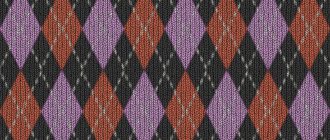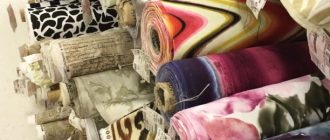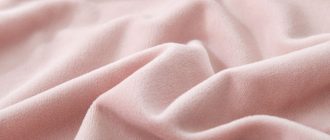Why Use Knit Fabric in Your Sewing Projects?
Are you thinking about using a knit fabric in your sewing projects? You probably have several questions about the fabric and its use. In this article, we’ll go over what knits are, how to use it, and why it’s better than other fabrics. You can also learn about the pros and cons of using this fabric.
What is the knit fabric?
When talking about fabric types, one type stands out above the rest: knits. These fabrics are produced using a knitting process, which gives them their characteristic stretch. Knits can be made from any fiber content and have a wide range of weight, draping ability, and softness.
The process by which they are constructed also determines their characteristics. The most basic difference between knits and woven fabrics is the process of creation.
When looking at the fabric content, it’s important to know whether it’s natural or synthetic. Natural fibers like cotton, linen, rayon, and nylon are examples. The weave must also be identified, which describes how the threads are woven together. Because knits are much more flexible than wovens, they are ideal for garments that require a lot of stretch and don’t wrinkle or pucker. Another difference between knits and wovens is the way that they are finished.

Another way to determine the fabric’s quality is by doing a wrinkle test. Try rolling a small sample of the fabric into a fist, and if it springs back without leaving a crease, then it’s a knit. If it stays creased, it’s most likely woven. Knits are made from multiple yarns that cross at right angles, while wovens are made from two separate layers. To determine the fabric’s quality, a few simple tests will tell you a lot about what type of fabric you’re dealing with.
What is knit made of?
You’ve probably wondered, “What is knit fabric made of?” This article will explain its basic composition and how it can make sewing easier. Whether you’re making a casual T-shirt or a fashionable jacket, knit fabric has many uses. It can be stretchy and soft, but it’s also good for active wear, such as lingerie. It can be opaque, semi-opaque, or even breathable.
Knit fabrics have interlocking loops. The result is a smooth and stretchy fabric. While wool is usually the material of choice, other fibers can be used to make knits. Depending on the fiber content, knits can be made with 100% cotton, 100% polyester, cotton/polyester blends, nylon, rayon, and cotton/spandex blends. The main differences between knit and woven fabrics are in the amount of stretch the fabric can provide.
Knit fabrics are made of yarn and are usually constructed by knitting. The knitting process involves a series of loops, which are drawn through the back. There are two sides to knit fabrics: the technical face and the effect side. The technical face is the side with loops pulled toward the viewer, while the effect side is the one intended to be the outermost surface of a textile product or garment. They can be the same or completely opposite.
The benefits of using knit fabric
Knit fabric comes in a variety of colors, textures, and materials. Each type of knit is made for a particular purpose and is suitable for varying periods of time. The most common type of knitted garment is flat stockinette, which is a row of knit and purl stitches alternating. But there are also many other simple textures that you can create using knit and purl stitches. Some knits can be made into more complex patterns using slip stitching.
The material’s excellent water-absorption properties make it perfect for summertime attire. Many plant-based knits like cotton can absorb as much as 27 times its weight in water. They are made up of loops of double or single yarn, which act as pockets of water and air. However, this makes them hotter than other fabrics because they have a higher tendency to retain moisture than other materials. If you’re looking for a new type of material to use in your next sewing project, knits can be an excellent choice.
The cons of using knit fabric
One of the benefits of knit material is that it is stretchy and comfortable. This is especially beneficial for sportswear and t-shirts. Compared to woven fabrics, however, knit material can become rigid over time. It may also pill or have a tendency to cling to parts of the body. However, cotton weave fabrics are easy to launder and won’t wrinkle or shrink. On the other hand, woven fabrics require more piecing together to create a garment.
History of knit fabric
Throughout the centuries, knits have been used for a variety of garments, from simple socks to detailed jackets. In the Middle Ages, knitted shirts were popular and often featured gold threads or embroidery. Today, knitwear is an affordable and versatile option for making a wide variety of clothing. To learn more about the history of knits, read on! The following are some of the most significant developments in this fabric.
The history of knit fabric dates back to the early Middle Ages, but it is not clear where it originated. However, experts believe that it may have originated from the Middle East, as early Egyptian examples were made of cotton. Moreover, they often had symbols and Arabic blessings knitted into them to protect against evil. In the fourteenth century, knitted garments were used by fishermen for making weatherproof jumpers. By the 16th century, knitting machines were being used for hosiery by the elite classes.
How to care for and clean knit fabric?
If you are wondering how to care for and clean knit fabric, this article will provide a few tips to help you get the most life out of your new purchase. Knitted fabrics are delicate and malleable, making them easy to care for. However, improper care can cause your product to lose its shape or even shrink. To avoid this, follow the care instructions carefully. Below are some of the best methods for taking care of knits.
After wearing a knit, make sure it has enough air to breathe. If your knit is new, place it in a mesh laundry bag. Shake it periodically to remove any traces of dirt or debris. Be sure to choose a gentle cycle to avoid a crease. Avoid tumble drying. Keeping your knits in mesh bags allows them to breathe and avoid being snagged on other clothes.
FAQ
Main knit fabric colors
- pink
- green
- black
- red
- white
- blue
- yellow
- purple
- grey
Main knit fabric brands
- Ambesonne
- Fabric Merchants
- Sophia-Art
- APC Fabrics
- ben textiles inc.
- Lunarable
- eLuxurySupply
- Michael Miller
- SanVera17
- TELIO
- Robert Kaufman
- Spoonflower
- Cotton + Steel





